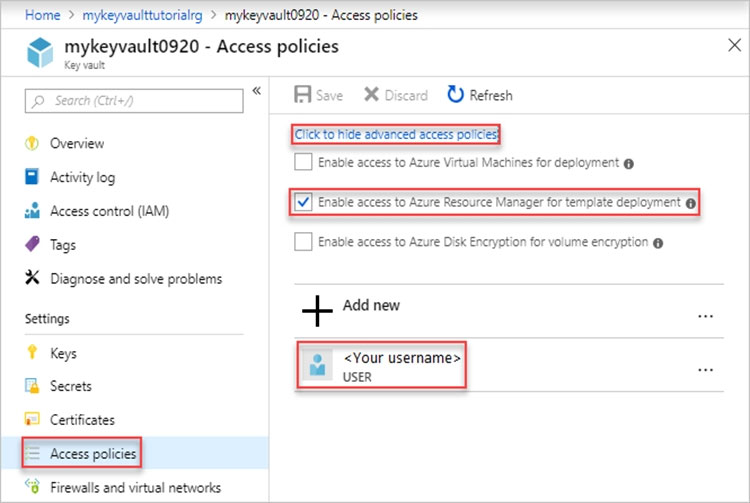

DRAG DROP -
Your company has a project in Azure DevOps.
You plan to create a release pipeline that will deploy resources by using Azure Resource Manager templates. The templates will reference secrets stored in Azure
Key Vault.
You need to recommend a solution for accessing the secrets stored in the key vault during deployments. The solution must use the principle of least privilege.
What should you include in the recommendation? To answer, drag the appropriate configurations to the correct targets. Each configuration may be used once, more than once, or not at all. You may need to drag the split bar between panes or scroll to view content.
NOTE: Each correct selection is worth one point.
Select and Place:


Kazillius
Highly Voted 4 years, 1 month agorfox321
3 years, 10 months agordemontis
3 years, 4 months agocatfood
2 years agordemontis
3 years, 4 months agoawron_durat
3 years, 6 months agoParkXD
2 years, 4 months agoprashantjoge
3 years, 3 months agomshin
2 years, 4 months agofkaracan
2 years, 5 months agosv_26
Highly Voted 4 years agorfox321
3 years, 10 months agoCompetentNinja
3 years, 4 months agoAugustineUba
Most Recent 2 weeks, 4 days agoBorisUK2000
1 month, 3 weeks agoGooldmember
9 months agoGooldmember
8 months, 3 weeks agoGooldmember
9 months agoSkankhunt
1 year agoarr73
1 year, 3 months agoarr73
1 year, 1 month agochloaus
1 year, 3 months agoyana_b
1 year, 9 months agoyana_b
1 year, 11 months agoWH16
1 year, 11 months agorenzoku
2 years agoPipek
2 years, 4 months agoAzureJobsTillRetire
2 years, 6 months agorikininetysix
2 years, 7 months agorikininetysix
2 years, 7 months agoRachid
2 years, 8 months agohebertpena88
2 years, 9 months agoAksssssh
2 years, 9 months ago